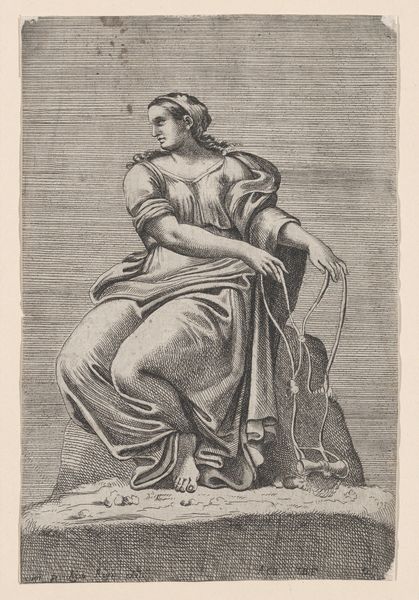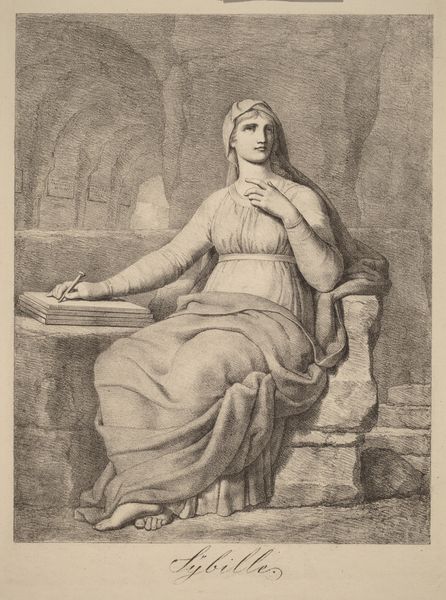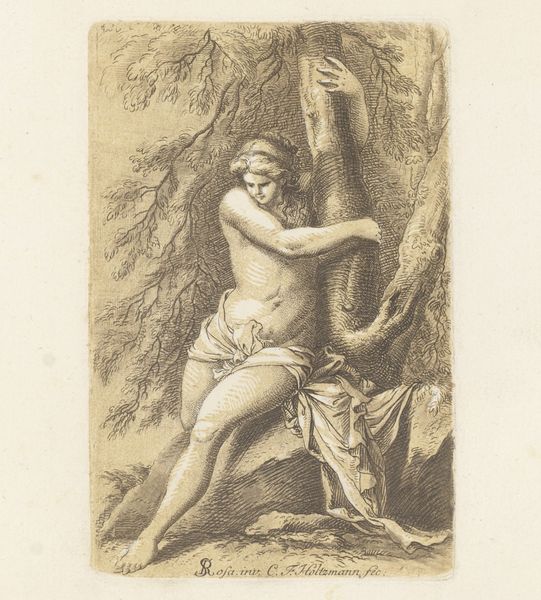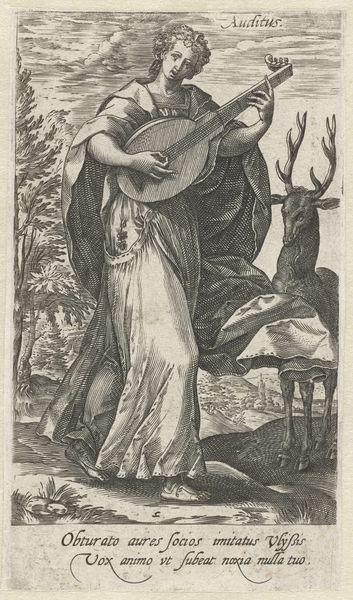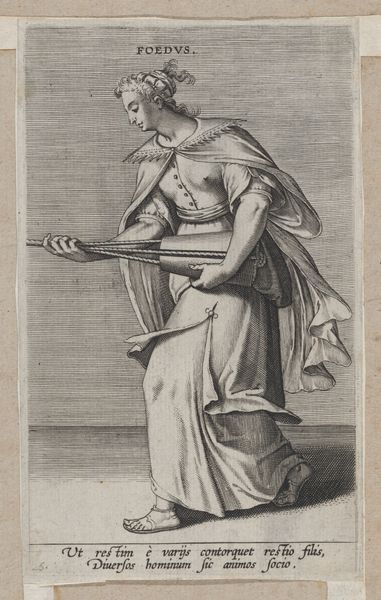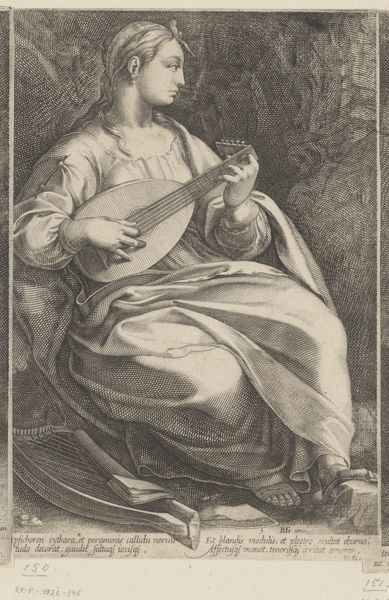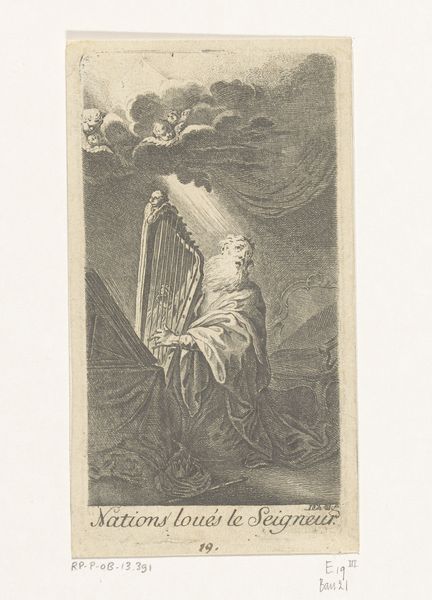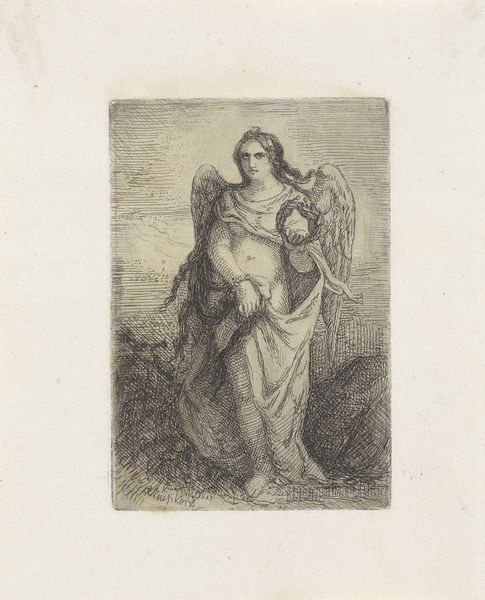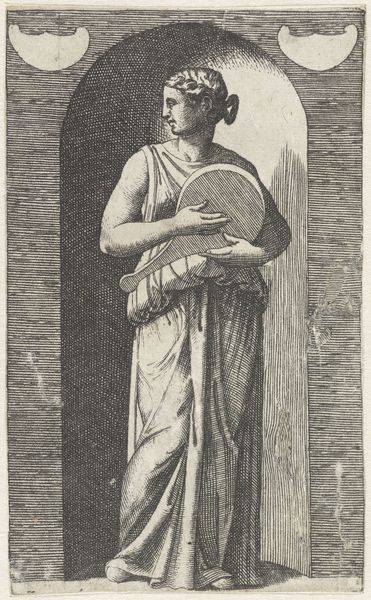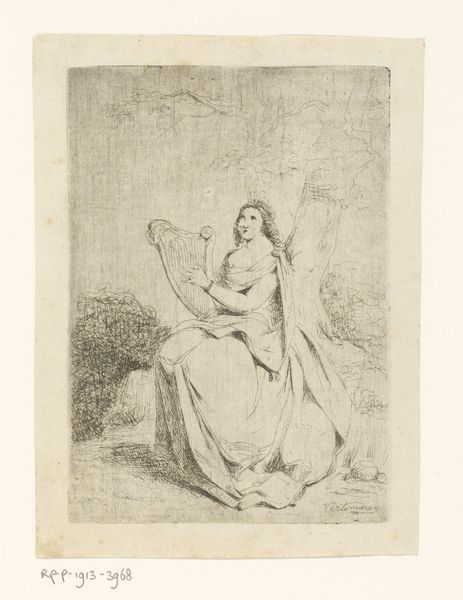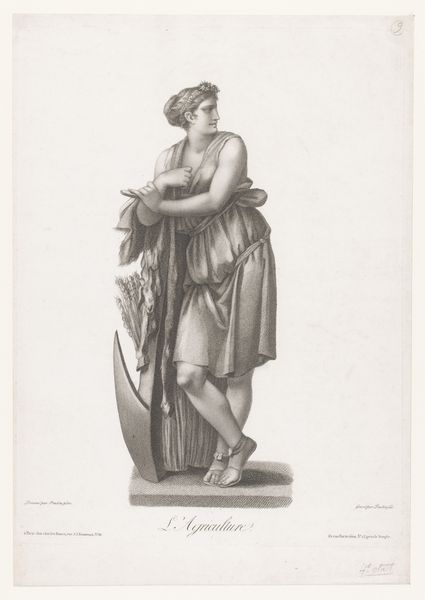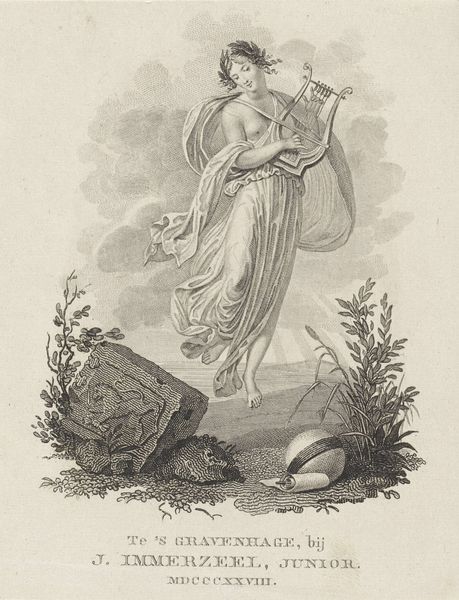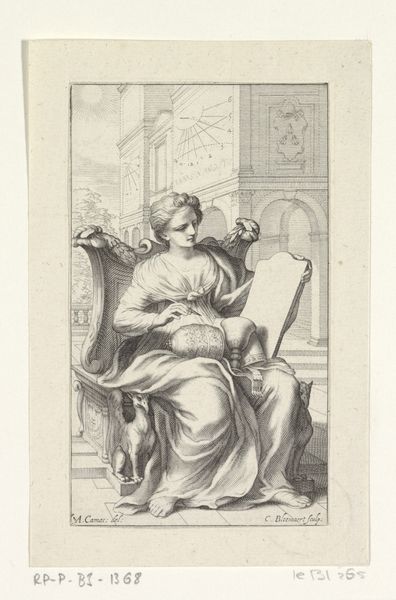
print, etching
# print
#
etching
#
classicism
#
portrait drawing
#
history-painting
Dimensions: 114 mm (height) x 82 mm (width) (plademaal)
Curator: This is Andreas Flint’s “En kvinde med lyra og fasces,” an etching made sometime between 1767 and 1824. It’s part of the collection here at the SMK, Statens Museum for Kunst. Editor: My first impression is that there's an austere grace to it, almost monumental despite being an etching. The stark contrast amplifies the weight of the figure against what seems like a rough, natural backdrop. Curator: It’s an excellent example of classicism. Note the figure posed as a neoclassical ideal of virtue and reason. The composition deliberately echoes Roman motifs of power and civic duty, reimagined during the Enlightenment. Editor: The cross-hatching is quite remarkable, adding texture to the drapery and landscape while reinforcing the symbolic severity. Did the lyre and fasces typically appear together? Curator: Infrequently, yes. The lyre is of course a symbol of harmony, and artistic pursuit. The fasces is far more complex, referencing the authority and unity of the state in Ancient Rome. Pairing them presents an allegory, perhaps, for the role of the arts in guiding a just society. Editor: I can't help but wonder about the implications of the choice to foreground these instruments within the representation of the woman in the context of revolution throughout Europe. There’s tension between aesthetics and function implied within the piece. Curator: Precisely. The piece enters into a broader 18th-century discourse surrounding the roles of the arts and civic virtue in an era marked by burgeoning concepts of nationhood and revolution. Note her somewhat melancholy, contemplative demeanor. Is this perhaps, the artist’s meditation on the responsibility accompanying such ideals? Editor: I am most moved by the stark rendering that adds a somber, introspective quality that tempers any triumphal reading one might project upon it. It provides pause. Curator: It allows us to consider that those ideals, and their representation, are always mediated. Editor: An important detail, underscoring the power of visual language to both embody and subtly question its cultural foundations.
Comments
No comments
Be the first to comment and join the conversation on the ultimate creative platform.
